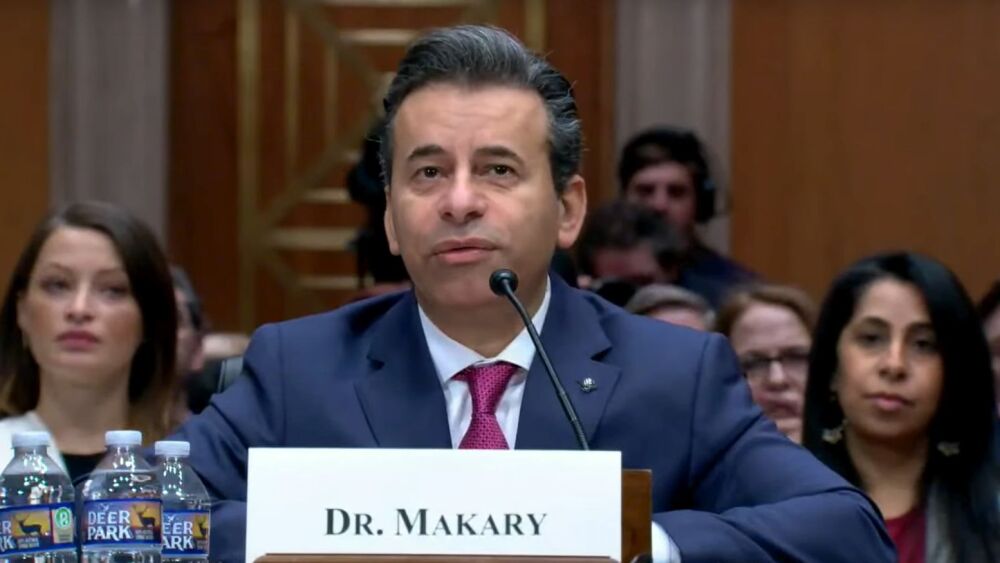August 29, 2005
By: Suvarna Bhatt, BioSpace Beat Correspondent
San Francisco Crowned Stem Cell Research Headquarters for State of California
A wave of anticipation fled over the state of California in May to find out real estate bid results for the California Institute for Regenerative Medicine’s (CIRM) new headquarters. Now that the site selection competition is over, other challenges loom as opponents delay the CIRM from taking root. The prime real estate in the Mission Bay district will be rent-free for ten years and will serve as the main administrative site for the CIRM. The institute will be in close proximity to leading research institutions and biotechnology companies, making the area a hub for cutting edge research and development. According to Nicole Pagano, press contact of the CIRM, “out of the 11 bids for the site, the board found San Francisco to be the most attractive and advantageous bid, with $17 million in incentives, including 46,000 square feet of research space.” After voters approved Proposition 71 in the November 2004 election, California became the first state to fund stem cell research since President Bush imposed limitations on federal funding in 2001.The CIRM was established after the passage of the Proposition as a stem cell agency to regulate stem cell research and provide funding through grants and loans for new research and facilities. The institute, governed by the Independent Citizen’s Oversight Committee (ICOC), is responsible for distributing $3 billion in state funds for stem cell research to universities and research institutions over the next ten years. The CIRM also establishes constitutional right to conduct stem cell research while prohibiting the Institute’s funding of human reproductive cloning research. Passage of this Proposition creates an independent source of funding for research, bypassing President Bush’s limitations on the use of federal funding for embryonic stem cell research. CIRM Faces Legal Obstacles The major challenge the CIRM faces now that site selection is over, are a handful of lawsuits filed against the agency by opponents to Proposition 71. The institute cannot release the bonds until the lawsuits are settled and this means research cannot go forward until the bonds are sold. Currently, there are three lawsuits. One, filed by the Life Legal Defense Foundation, which represents taxpayer advocacy groups, alleges that the stem-cell program is illegal because it lacks proper state oversight. According to Dana Cody, Executive Director of Life Legal Defense, and one of four attorneys that filed the suit, “the California Stem Cell Research Bond Act violates the California Constitution because the ICOC is not under the exclusive management and control of the State. This is in the California Constitution, Article XVI, section 3.” According to this article, any entity must have exclusive state management and control. Cody explains, “Proposition 71 created the ICOC, however, those individuals have been appointed not elected. There is no authority and there are no guidelines that give state authority over the ICOC. So essentially, they can issue the bonds for any use, and there is no accountability to the taxpayer. Public money will be used at the discretion of an institution whose governing board and working groups are unaccountable to the public.” Cody affirms that while Life Legal Defense is a pro-life organization, “these are the only grounds for the lawsuit, there are no moral or ethical issues raised in this lawsuit. We do not hide who we are, we do oppose embryonic stem cell research, but not adult stem cell research. Based on our own study and understanding, we feel that this [adult stem cell research] is the most promising area of the research. It’s really easy to point fingers and think we don’t care about saving lives and curing disease, of course we do.” The other lawsuit suit is filed by David Llewellyn Jr., who has worked on numerous anti-abortion cases in the past. Llewellyn represents a group affiliated with the California Family Council. He attacks the institute’s efforts by claiming that Proposition 71 violates the constitution. Llewellyn denies the lawsuit is a tactic to delay funding. Both suits were declined by the California Supreme Court. Life Legal Defense re-filed their suit in April, and Llewellyn’s suit was re-filed in July. A third lawsuit was filed in early August. The good news for the CIRM is that no more suits can be filed since the legal deadline for filing bond-sale challenges has expired. Discussions In Washington For many advocates, the true worry are other bills in place for Congress to decide on, some which limit stem cell research or make it illegal all together. A Senate bill co-sponsored by Senator Diane Feinstein would make human reproductive cloning or human cloning illegal federally. Human reproductive cloning is already illegal in California. A competing bill co-sponsored by Senator Sam Brownback of Kansas would make patient specific embryonic stem cell research illegal. Patient specific embryonic stem cell research is also known as therapeutic cloning or Somatic Cell Nuclear Transfer (SCNT). This involves the use of embryonic tissue to produce genetically identical stem cells that can develop into other types of cells in the body. The stem lines can be generated using somatic cells from patients with disease or injury. According to Susan DeLaurentis, President and CEO of the Alliance for Stem Cell Research, “there is more promise in this area of research because the cell lines are from the patients themselves. The cells have the same DNA as the patient and the therapy can be developed specific to the individual.” If this legislation passes, research institutes in California, as well as the entire United States will be affected. DeLaurentis comments, “there will always be controversy surrounding stem cell research, but I hope we can have scientific arguments rather than philosophical or personal arguments, and try to really understand the science behind the research. It’s only then that we will be able to advance research, and move to finding cures. There are over 100 million families in this country suffering from illnesses that could be potentially treated and cured by stem cell research.” Moving Forward Meanwhile, the CIRM continues to move forward. Pagano says “the projected move in date for the new headquarters is in early November, and coming right along on schedule.” The CIRM will host its first scientific meeting, “Stem Cell Research: Charting New Directions for California,” scheduled for October 1-2 in San Francisco. Experts in the field from around the world will gather for presentations by stem cell researchers. Funding issues for the institute will be discussed at the Bay Bio meeting, “The Business And Financing Of Stem Cell Research” scheduled for September 19th at UCSF, Genentech Hall. Experts in the field will convene to discuss among other topics, funding possibilities so that research funds can be allotted. DeLaurentis, sounding hopeful, states her organization is excited about progress at CIRM. “We hope the opponents will withdraw their lawsuits so we can move forward. It’s possible that the lawsuits will be cleared up in a short time, but we are concerned that opponents will continue to find ways to delay funding. The opponents need to understand that we are the stem-cell majority, and that’s what should move forward, the will, the majority of the people.” Along with the legislative battles ahead, a long road of research also lies ahead before stem cells can one day be developed into cell-based therapies. |




